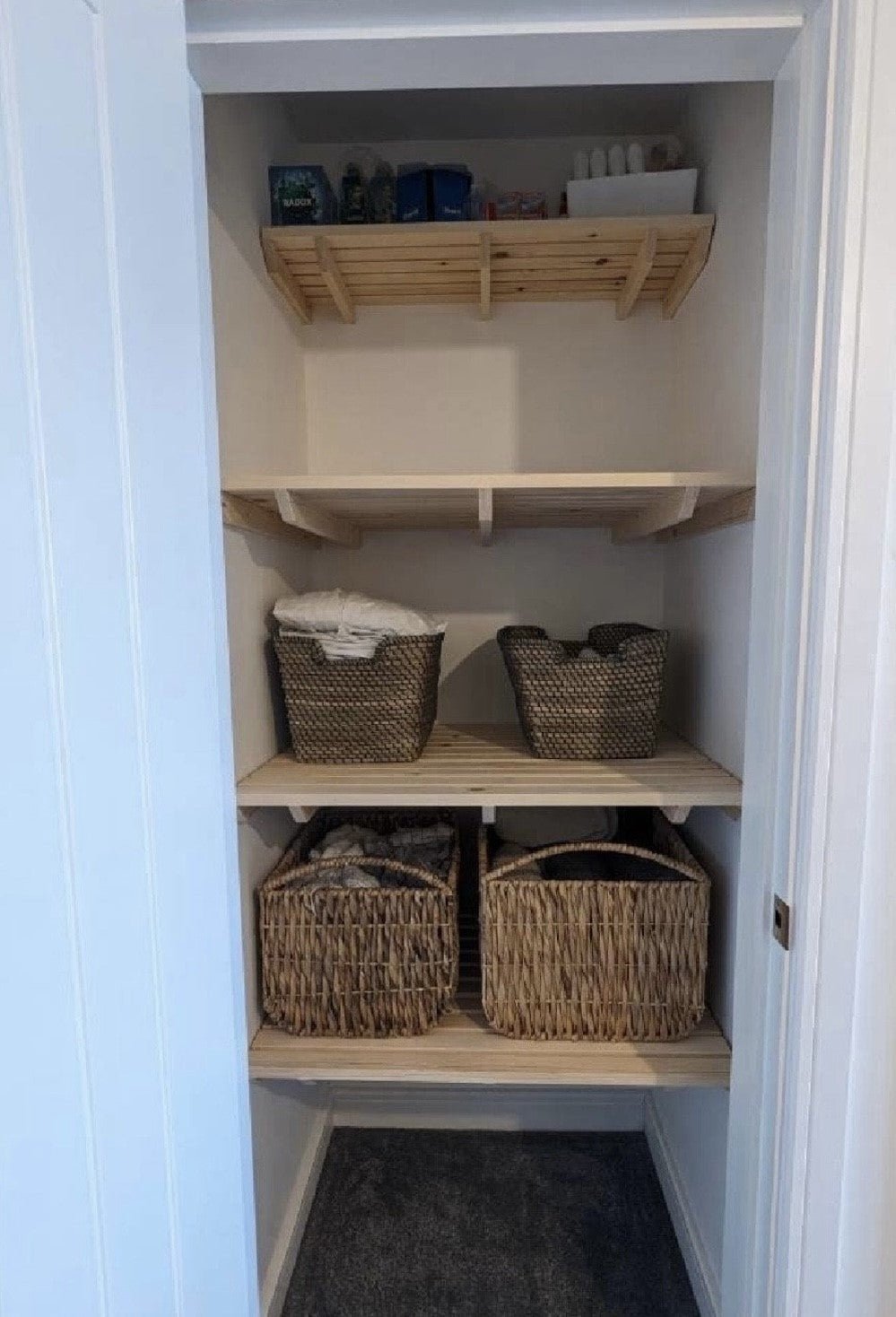Tips for Planning your Airing Cupboard Storage
Whether you've moved into a new home or you're refreshing an existing one. Here are our top four tips to create airing cupboard storage that works for you:
Tip 1 – Sort Items by Frequency of Use
Categorise items based on how often you use them, regularly used items should be easy to access and return.
Frequent items: These could be towels, your favourite bed linens, cleaning products.
Seasonal Items: These could be guest linens and towels, beach towels, spare duvets.
Items can then be categorised by type (e.g., towels, linens, blankets)
Tip 2 – Baskets
Baskets can be a great tool for keeping cupboards tidy.
If opting for baskets, try using your above categories to store seasonal items and have your frequently used items displayed on the most accessible shelf.
If using baskets for frequently used items, choose to store them on a shelf that is below shoulder height, allowing you can see into the baskets easily. Store items using a filing system rather than stacking as this allows you to find items quickly.


Top tips for using baskets – Avoid storing frequently used items in baskets on shelves that are above your eye-level – your frequents should be easy to access and you shouldn’t need to remove a basket from the cupboard whenever you want to grab a towel.
Avoid storing frequently used items in baskets at the back of your cupboard if there are other items stored in front.
Tip 3 – Arm’s Length
When choosing the depth of your shelves it is tempting to want to maximise the available space in your cupboard, however shelves that are deeper than an arm’s length can become problematic.
An average adults arm length is between 60cm – 70cm when your shelf is deeper than this it can create inaccessible space. Counteracting this with baskets can be helpful (e.g., If your arm’s length is 65cm and your cupboard is 90cm using a 30cm deep basket will bring your stored items back into arms reach) however, as we discussed in the previous tip, this is not a great solution for your frequently used items.
Top tip – For deep cupboards, allocate one shelf for frequently used items and cap the depth between 60cm-70cm (work from your own arm’s length). Maximise cupboard space with another shelf at the full depth and use baskets storing seasonal items to allow accessibility. Store these baskets by frequency of use again (e.g., Christmas themed linens – annual/ store at the back, Guest linens – Aunt Margaret stays every few months/ store in the middle)
Tip 4 – Shelf positioning
Where you install your shelves matters, if you are 4 foot 2 it’s unlikely you would install your shelves at the same height as someone who is 6 foot. Here are some things to consider before getting out your drill:
Can you view the whole area of your most frequently used shelf?
Top tip - Decide the height of this shelf first and plan your others around this. Aim for this shelf to be between waist and chest height.
If you are planning to use baskets, is there enough space between shelves to move them on and off?
Is there anything I want to store on the cupboard floor that I need to consider before finalising my shelf heights? (e.g., hoover, ironing board)
Do you have any large or bulky items that you are planning to store and is there enough space between shelves for these? (e.g., some of our customers have used their top shelf to store spare duvets and suitcases)
There we have it, our top four tips! We have discussed categorising items by frequency of use, utilising baskets to organise your items effectively, opting for shelf sizes that work for us and considering height and accessibility before installing.
What do you think of our tips?
Is there anything you feel we have missed?
Do you have any great suggestions to share with a fellow organiser?
Let us know below!

